A Year After Chemical Spill, Ohio Community Is Still Recovering
7:59 minutes
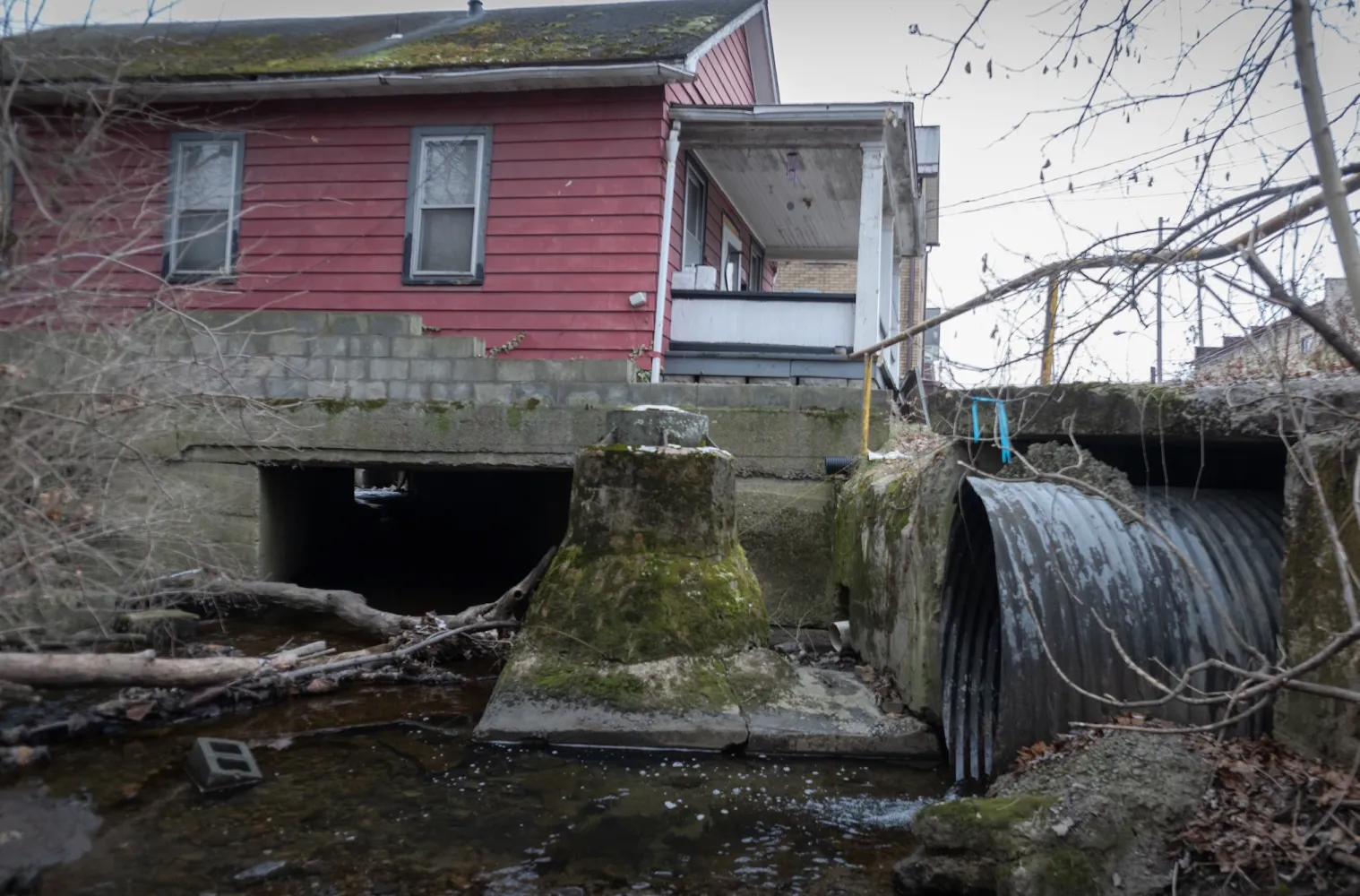

This article is part of The State of Science, a series featuring science stories from public radio stations across the United States. This story, by Reid Frazier, was originally published by The Allegheny Front.
Christina Siceloff and Randy DeHaven walk down a short bank to Sulphur Run, a creek that winds between houses in East Palestine, Ohio.
They make their way to a section of the stream about three-quarters of a mile from where the Norfolk Southern train derailed last February 3rd. Siceloff has brought a shovel, but she doesn’t even need one to show the condition of the stream.
She just pushes her rubber boot into the sandy streambed, and an oily sheen erupts out of the muddy bottom, spreading on the top of the brownish-grey water.
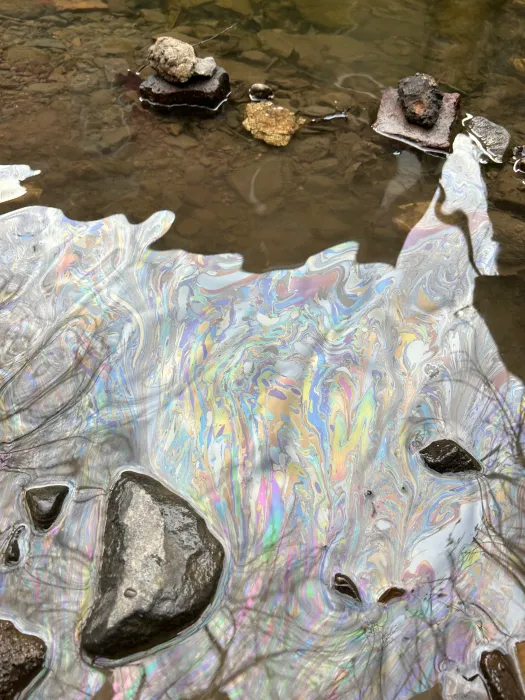
“Kind of like what you would see in a puddle at a gas station,” Siceloff said.
Siceloff has brought a mask because the creek water still gives her headaches. For much of the past year, she’s been helping DeHaven and a group of volunteers document the condition of the stream.
Siceloff lives a few miles away in Darlington, Pennsylvania, and could see smoke from the 2023 derailment and subsequent fire from her bedroom window. She was sick for five and a half months, as were her father and son.
“I had migraines, congestion, runny nose. I had pressure in my ears, burning in my nose, eyes and throat,” Siceloff said.
She now has tremors in her hands, and her eyes twitch. She sneezes in the laundry soap aisle at Walmart and can’t stand the chlorine smell at a swimming pool.
In the days after the derailment and subsequent chemical spill, over 40,000 fish and other species died.
DeHaven, who lives in town and has been filming the stream for much of the past year, saw it firsthand.
“Most of the frogs were belly up,” DeHaven says. “There was a few fish floating, but a lot of them were just laying on the bottom.”
Now, a year after the derailment, regulators say they have cleaned up the site, and that the air in town is clear.
But the stream running through the middle of town is still contaminated and some in the area still worry about whether the chemicals sitting at the bottom of the stream are going to make their way into peoples’ bodies.
“I’m sad about it,” Siceloff said. “It’s like things are never going to be the same, or be how they were. It’s just ruined.”
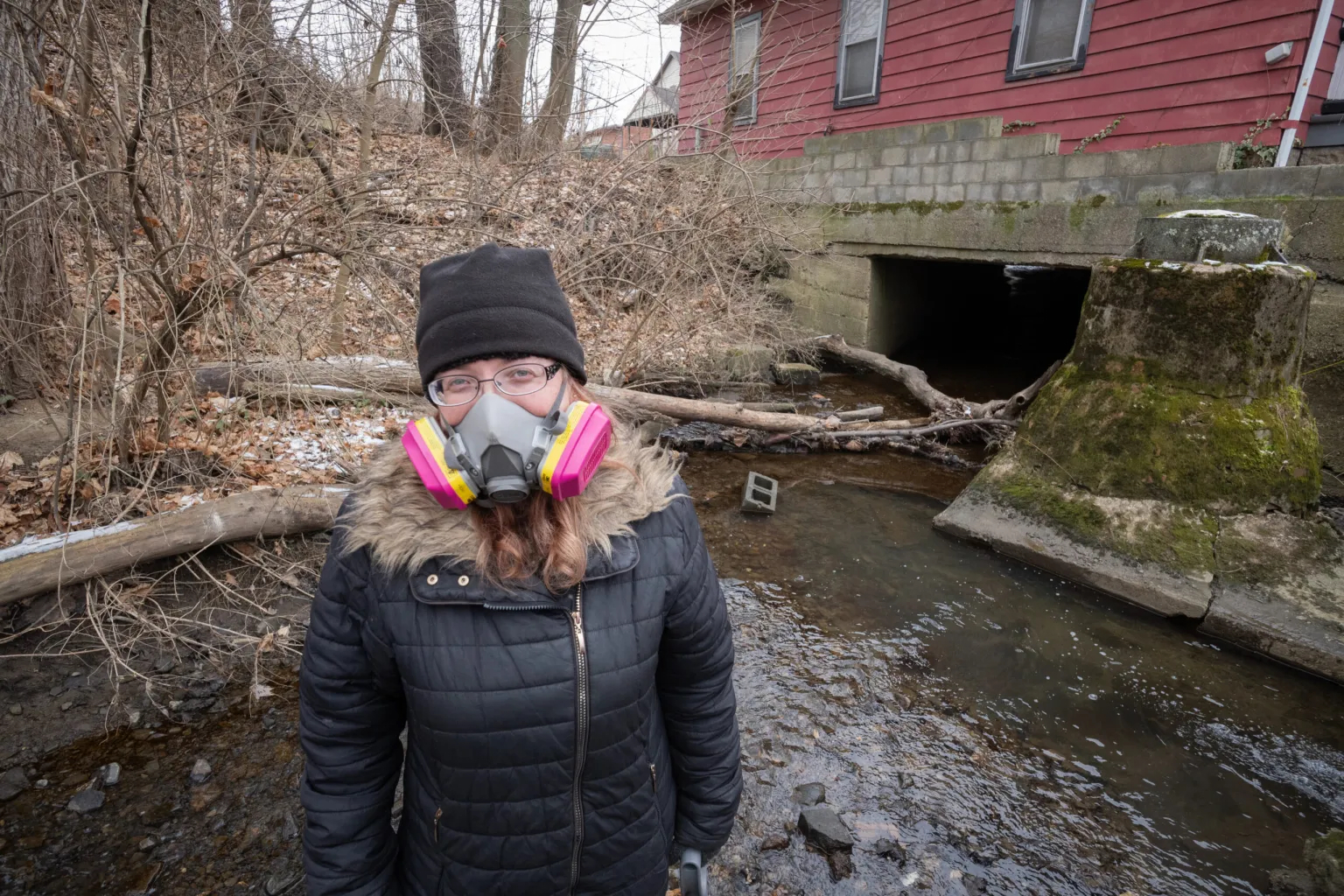
Regulators say the water flowing through Sulphur Run and other nearby streams is recovering after months of cleanup work. And that fish have started coming back.
“The acute impact of chemicals going into Sulphur Run was certainly immediate on some amount of aquatic life,” said Anne Vogel, director of the Ohio EPA. “But, as of this summer, we were seeing aquatic life return.”
A 2022 survey by the state found the streams were polluted with polycyclic aromatic hydrocarbons, or PAHs, some of the same chemicals released in the derailment.
But there is more pollution in Sulphur Run today than before the derailment, said Mark Durno, a site coordinator for EPA in East Palestine.
“We do have our survey results showing that almost 70% of Sulphur Run has some level of sheening happening,” Durno said.
The derailment released hazardous chemicals like butyl acrylate, and the carcinogen vinyl chloride into the stream. The plume of chemicals was detected as far as Cincinnati – 400 miles downstream.
By now, most of those chemicals are out of the stream, Durno said.
What’s left in the streambed is a type of oil that spilled in the derailment, says Debra Shore, regional administrator for EPA.
“There was lube oil in one of the tanks that derailed, and that discharged into the ditches and made its way into Sulphur Run,” Shore said.
The cleanup plan, according to regulators, is still being worked out. It will likely involve a technique called sediment washing, in which the contamination at the bottom of the creek is exposed to oxygen.
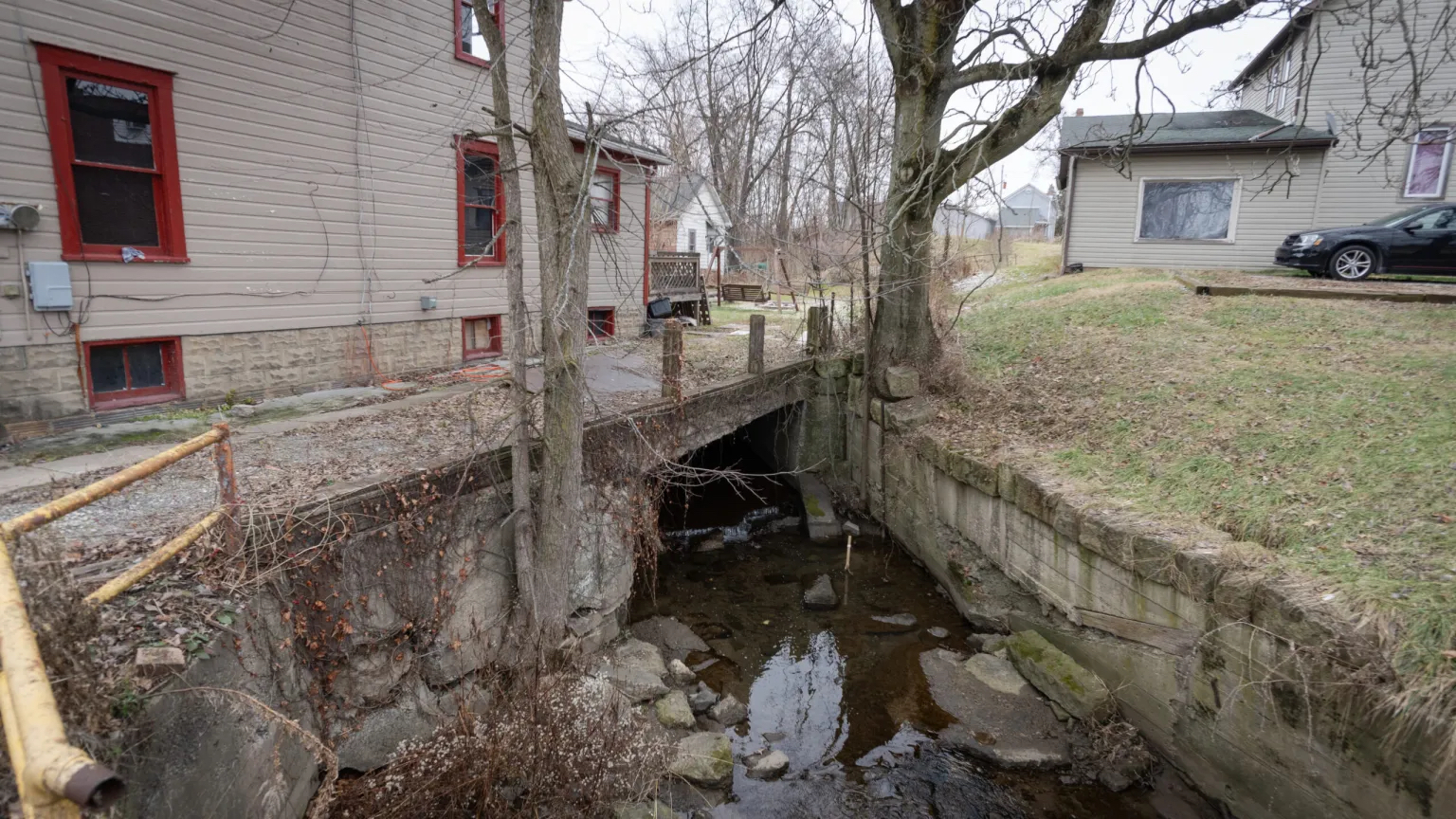
“You stir the sediment, you release the chemical from the sediment, you release whatever’s there–if it’s lube oil or whatever, getting held up under a rock,” said Ohio EPA’s Vogel. “And then we have booms in place in the creek so that any product is collected. And then we vacuum it up.”
The chemicals in the sediment include PAHs, which are found in oil, coal and gasoline. Once they enter into streams, they can be broken down by microbes, said Ember Morrissey, an associate professor of environmental microbiology at West Virginia University. But their breakdown can be slowed under certain conditions, like environments with low levels of phosphorus and nitrogen, she said.
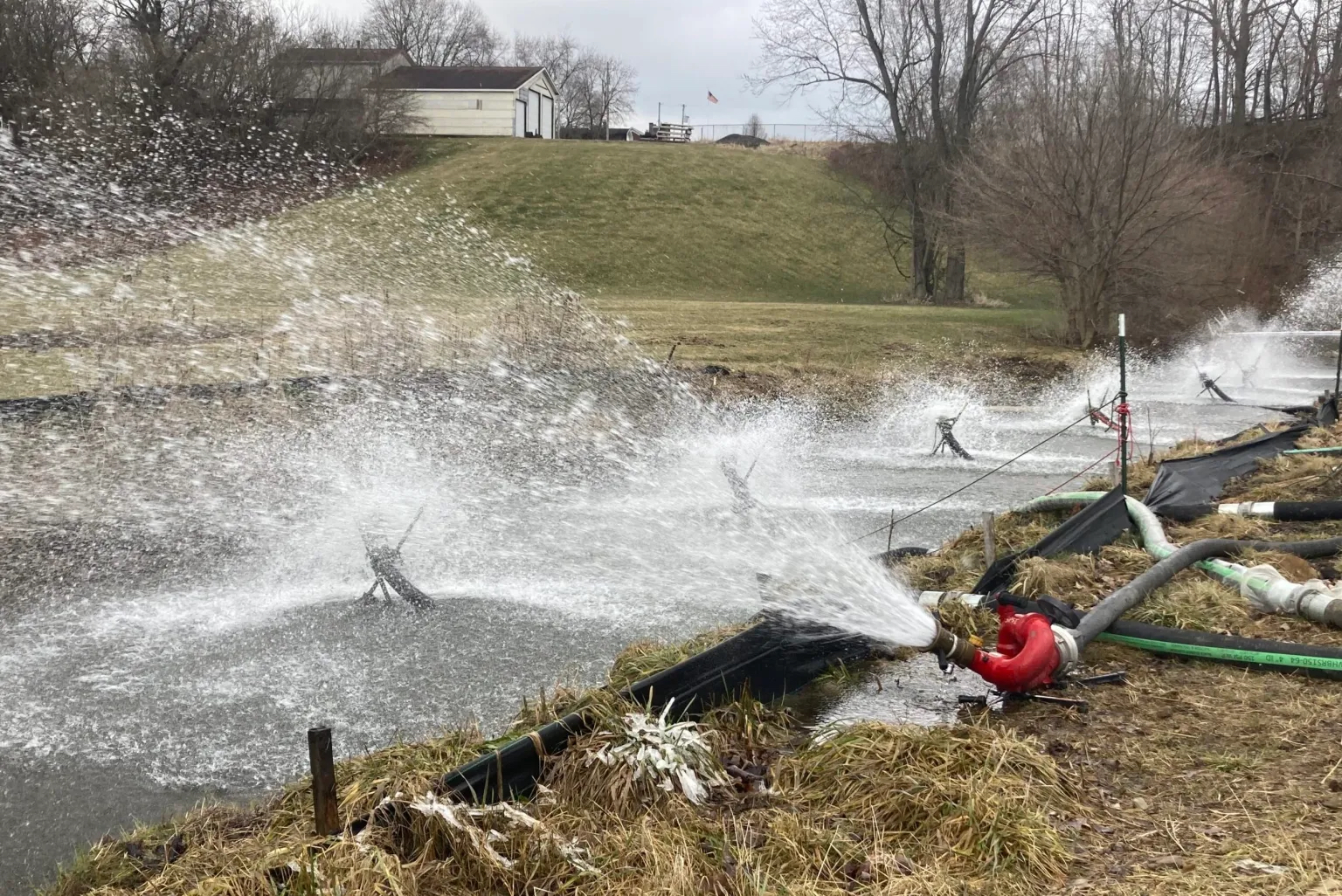
“When you have these types of contamination, you can get traces of organic contaminants that can stick around for a long time and potentially have toxicity on the wildlife,” Morrissey said. “Maybe not so much toxicity they can’t live there, but they still might not be able to function in the same way that they would in an uncontaminated ecosystem.”
Making the situation more complicated is the fact that Sulphur Run flows directly beneath several buildings in town through a series of culverts.
Those include municipal offices for the village of East Palestine. Several workers there got sick from chemical fumes after the spill, according to Andrew Whelton, a professor of civil, environmental and ecological engineering at Purdue University who is studying the derailment’s aftermath.
“I talked to workers in those buildings, and they validated that, yes, they complained about it to the EPA. They complained to the governor about the illnesses that they experienced due to the chemicals coming in,” Whelton said. “We did physically visit a building that was, in fact, contaminated for at least four and a half months because of the contamination that came in.”
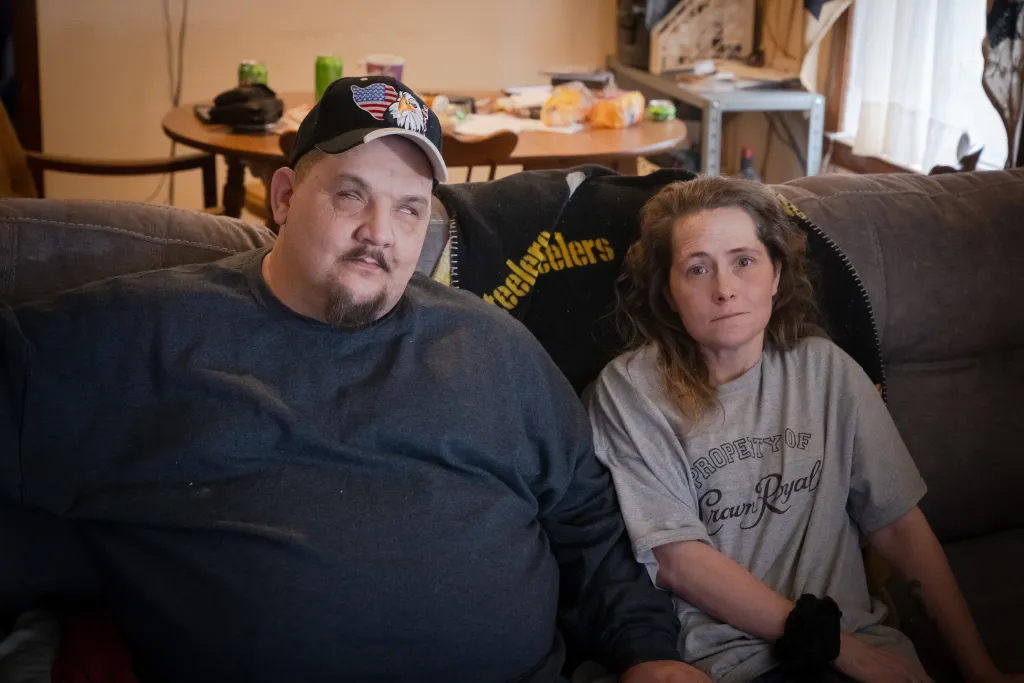
Gary Taylor lives above Sulphur Run in a building built on top of one of the stream’s culverts. He was surprised to learn there was still contamination in the stream that passes a few feet beneath his house.
The message he received from EPA, Norfolk Southern, and its contractors has been that things are going back to normal.
“The creek was all fine. Everything. The land, the ground — all fine. The air quality is fine. And they said it’s all good, right?” he said. “Ain’t nothing to worry about.”
Taylor is blind. His girlfriend, Tracy Wright, has Multiple Sclerosis. Neither drive, so relocating outside of town wasn’t an option. Instead, they stayed in their rented house above the stream all year, including months when it smelled like a burnt furnace filter, even when the heat wasn’t on.
Now he’s angry to find out there’s still contamination.
“I’m pissed,” Taylor said. “They were lying to me, and I wish I could sue their ass, I would. I don’t like to be lied to. I live here. This is my health we’re talking about, and my babe’s.”
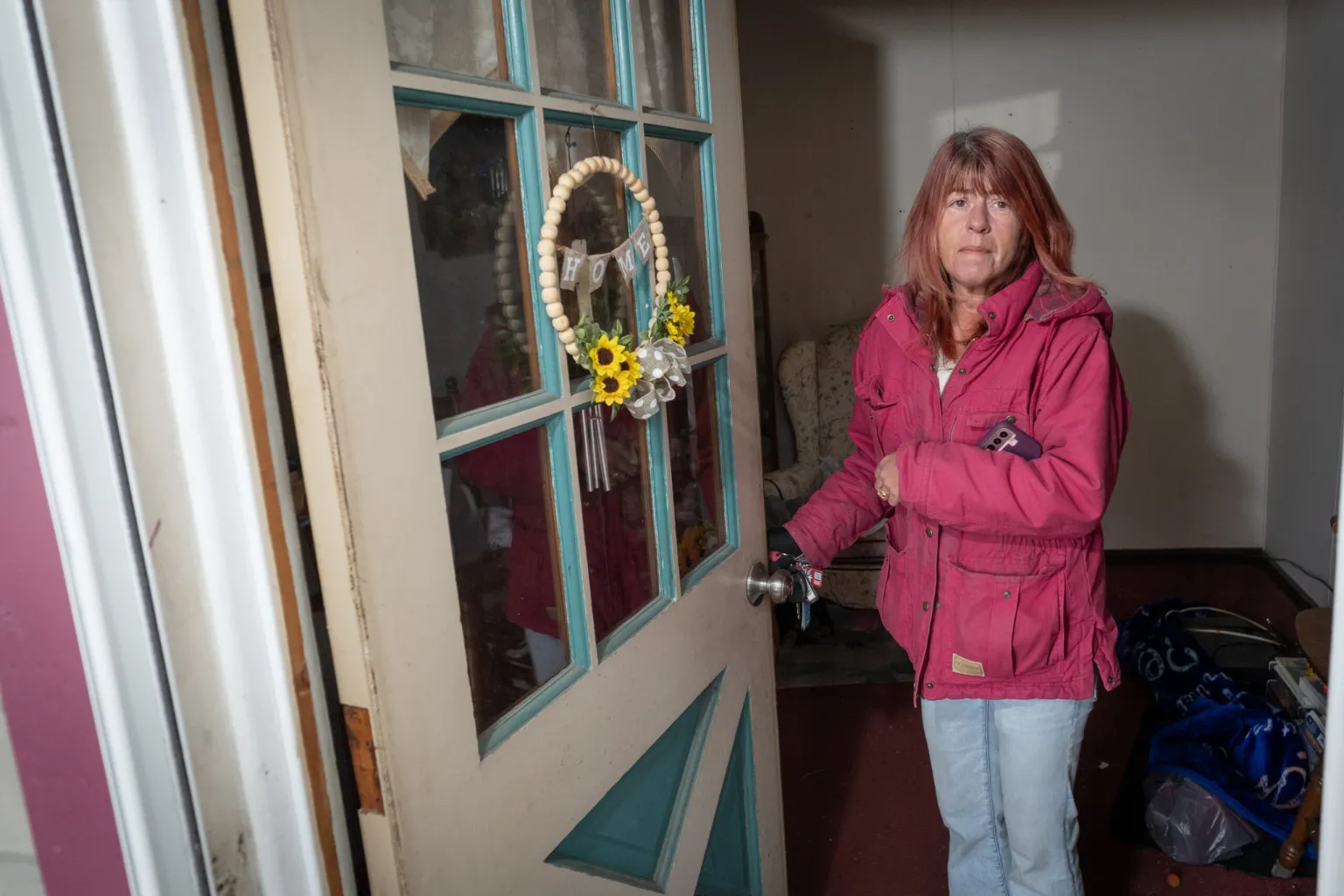
A few doors down is Krissy Ferguson’s place.
When the creek swells during heavy rains, it tends to back up through a drain into her basement. She has found baseballs and baby doll heads that have come up out of the drain into her basement.
“There’s been times that the water has taken the hot water tank and totally submersed it,” she says.
Ferguson grew up in the house and remembers playing in Sulphur Run as a kid. She’s been living with her family in a house Norfolk Southern is paying for in the nearby town of Columbiana because the chemical smell in her own home has been intolerable.
In September, her eyes stung after she spent less than an hour in the house. “They became bloodshot, swollen. It lasted for four days, burning,” she said. “It felt like something was stuck, like sand in your eyes.”
EPA says there shouldn’t be any vapors getting into Ferguson’s house now.
Ferguson’s 82-year-old mother was still living there the night of the derailment.
“Every day I’d get home from work and she would say to me, ‘Do we get to go home yet?’ And I would have to tell her not today, Mom.”
Ferguson says she’ll never let her mother move back into the house.
“I don’t want those waters to come in and make my family sick,” she said. “Those creeks are not clean.”
Sign up for Science Friday’s Education newsletter to receive monthly experiments, lesson ideas, and professional development opportunities delivered straight to your inbox.
Reid Frazier is an energy reporter for The Allegheny Front in Pittsburgh, Pennsylvania.
IRA FLATOW: This is Science Friday. I’m Ira Flatow.
And now it’s time to check in on the state of science–
RADIO ANNOUNCER: This is KERA.
RADIO ANNOUNCER: For WWNO.
RADIO ANNOUNCER: St. Louis Public Radio News.
RADIO ANNOUNCER: Iowa Public Radio News.
IRA FLATOW: –local science stories of national significance.
It’s been one year since the town of East Palestine, Ohio, was thrown into the middle of an environmental disaster. A Norfolk Southern train carrying 900,000 pounds of vinyl chloride derailed, spilling its contents into the environment and catching fire. Well, in the 12 months since the disaster, local reporters have been on the case, tracking everything from the government response to the lasting environmental impact.
Unsurprisingly, the residents of East Palestine remain frustrated, and the stream running below people’s homes, well, it is still polluted.
Joining me to give us an update is my guest Reid Frazier, energy reporter for The Allegheny Front, based in Pittsburgh, Pennsylvania. Welcome to Science Friday.
REID FRAZER: Hi, Ira.
IRA FLATOW: OK, tell us, fill us in, what has happened over the past year? What did the cleanup effort look like and who was responsible for it?
REID FRAZER: Well, what it’s looked like for the past year is just a massive work zone in the middle of a neighborhood, basically. You’ve had dozens of workers digging up soil, removing material, removing track, putting new material in its place, putting in temporary pipes to divert water away from the site.
There are these two huge million-gallon temporary water tanks. People in the community like to call them the Shamu tanks, like the SeaWorld killer whales tank. And those tanks are used for contaminated liquids. And that liquid is then taken away to facilities that are authorized to take it.
The EPA basically used its authority under the Superfund Act– technically it’s CERCLA, Comprehensive Environmental Response Compensation and Liability Act– to direct Norfolk Southern to clean up the site. The company issued work plans, EPA authorized it, and then Norfolk Southern hired out contractors to do the work.
IRA FLATOW: Is it possible to tell just how successful this cleanup effort was?
REID FRAZER: Well, the EPA says that it’s been very successful. Most of the soil and material has been removed from the area. All of the heavy lifting to clean up the immediate derailment are, where a bunch of chemicals spilled and were burned and leaked into the ground, that soil has been taken away.
IRA FLATOW: Are the townspeople happy, then, that it’s going well?
REID FRAZER: Good question. Some of them are ready to move on. Some of them are really angry that this happened and that parts of cleanup aren’t really done a year later, and that they’ve gotten sick. Possibly hundreds of people have gotten sick– headaches, nosebleeds, irritated eyes, rashes.
Many of those symptoms have started to go away for people, but people are worried that chemicals got absorbed into their homes, on surfaces, et cetera. And the EPA is refusing to do indoor testing right now. So some of those people are really upset and frustrated by that. So it’s a mixed bag.
IRA FLATOW: They’re convinced the town is really not safe to live in, then, I would imagine.
REID FRAZER: I mean, a lot of people I’ve talked to would like to move away because of this, but they cannot afford to. And I spoke with one person who this applies to, Krissy Ferguson. She has a house right over the stream that runs through town, which is still polluted. And she doesn’t want to move back to her house because she’s afraid of the contamination from the stream getting into her home.
KRISSY FERGUSON: I don’t want those waters to come in and make my family sick. And those creeks are not clean.
IRA FLATOW: Now, she says those creeks are not clean. Well, you’ve been down to the stream. Tell us what it looks like.
REID FRAZER: Well, from a distance, it looks like any normal stream in Pennsylvania or Ohio. But when you get down there and you step in the sediment or stir it up with a shovel, immediately, this rainbow sheen explodes onto the surface of the water and disperses as the stream flows down. So it’s like there’s oil at the bottom of this creek. And the creek is only a few inches deep in the part where I was at, which is very close to the derailment– about 3/4 of a mile down from where the train derailed.
IRA FLATOW: Do people really know– has there been a census of what kinds of chemicals are in the sediment?
REID FRAZER: Yes, we know what chemicals are in the sediment. So when the derailment first happened, there were a variety of chemicals that spilled out of the train. Some of them, like butyl acrylate and vinyl chloride, which you might have heard about, are volatile organic compounds– “volatile” being the key word. They have a tendency to vaporize or turn into a gas at lower temperatures.
So they are largely gone, either through aeration that the work crews did, where they basically pumped the water through these artificial fountains and just exposed all these chemicals to oxygen, or just the natural process, where these things break down. What’s left are these polycyclic aromatic hydrocarbons, PAHs– I feel like I can get away with that on Science Friday.
IRA FLATOW: Yeah.
[LAUGHTER]
Yeah, we like to go into the weeds here. Yes.
REID FRAZER: Yeah, yeah. And these are heavier, stickier compounds, kind of like oil. In fact, a lot of them are in oil and gasoline. And some of these are hazardous chemicals. Some are suspected carcinogens. And they’re harder to get out of the water.
IRA FLATOW: And these are the chemicals that people are reporting are making them sick, right?
REID FRAZER: That’s an interesting question. I think a lot of the regulators would say there were problems with fumes coming off of the creeks in the early days after the spill– and those would be these volatile organic compounds that I just talked about– but that these heavier compounds are less likely to volatilize, less likely to get into the air, get into people’s homes. And so they pose less of a health threat, according to the regulators.
IRA FLATOW: OK. Let’s talk about what might happen next. What are you going to look for over the next year, following this story?
REID FRAZER: Well, I’m going to be looking to see if they can clean up this stream– what they do to clean up the stream. Which, I need to stress, goes right through the middle of town. It goes underneath buildings, people’s houses, the municipal building where municipal workers work, et cetera.
So I’m going to be looking for if that stream can get cleaned up. Also, this summer, there’s going to be a full report from the National Transportation Safety Board about what caused this derailment. I’d like to see if there’s any details about things that Norfolk Southern could have done to prevent this from happening.
Also, there will be public health studies possibly coming out. The EPA could be looking at its own response to the cleanup and spill. Also, lawsuits.
So there’s a lot of things that are going to be coming out about this spill that we’ll be paying attention to.
IRA FLATOW: Reid Frazier, energy reporter for The Allegheny Front, based in Pittsburgh, Pennsylvania.
REID FRAZER: Thank you.
Copyright © 2023 Science Friday Initiative. All rights reserved. Science Friday transcripts are produced on a tight deadline by 3Play Media. Fidelity to the original aired/published audio or video file might vary, and text might be updated or amended in the future. For the authoritative record of Science Friday’s programming, please visit the original aired/published recording. For terms of use and more information, visit our policies pages at http://www.sciencefriday.com/about/policies/
Kathleen Davis is a producer and fill-in host at Science Friday, which means she spends her weeks researching, writing, editing, and sometimes talking into a microphone. She’s always eager to talk about freshwater lakes and Coney Island diners.
Ira Flatow is the founder and host of Science Friday. His green thumb has revived many an office plant at death’s door.